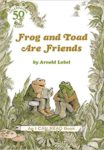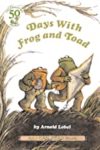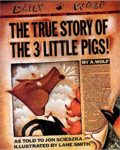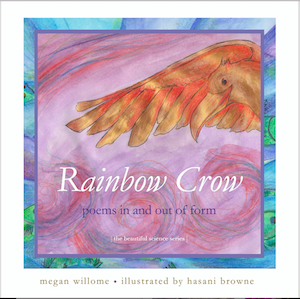Frog and Toad Are Friends
Have you ever sent a text — or a letter, or left a message — and waited anxiously for a response, and then, heard nothing in reply? What do you do next? Do you conclude your friend no longer likes you, or likes someone else better, or is too busy to be bothered with your same-old same-old? Ah, then you have been in a friendship!
Friendship is a kind of love. It takes much and gives much. We can find no better examples of how to be a true friend than in Arnold Lobel’s Frog and Toad series.
Lobel said, “To be making books for children is to be in a sort of state of grace.” And that is exactly what reading these books feels like. These friends have grace for one another. It is not always deserved. That’s what makes it grace.
Every Frog and Toad story is about friendship. How do we help a friend who doesn’t want help? What do we do when our friend annoys us? How should we react when our friend does something ridiculous? What about when we hurt our friend’s feelings? Lobel doesn’t give us answers; he gives us stories.
Even though these tales are fifty years old, Frog and Toad still have a devoted fandom.
The impact of the Frog and Toad stories on today’s children’s authors and illustrators is profound. Mo Willems said Lobel “dealt head on with the complexities, misunderstandings, and emotional swings that define a true friendship.” Unlike stories both older and newer than these, Frog and Toad’s don’t always resolve. Lobel was content to leave the ambiguity that is part of being friends with someone over the long haul.
Frog and Toad have a Twitter bot, with favorite lines from the books. If ever the news cycle gets a little wearying, pop in for a little green refreshment to bring you a smile in the middle of the day. Sometimes our friends are the ones who get us out of bed, even when we don’t want to budge.
“Toad, Toad,” cried Frog. “The sun is shining! The snow is melting! Wake up!”
“I am not here,” said the voice. [of Toad]
I also stumbled upon an instrumental tune called Frog and Toad by a group called Hawktail.
The music makes me feel welcomed with a wry smile, the same way the stories make me feel. Quick, Frog! Put on the tea and tell me a story that will give me “Shivers” so we can feel brave together (while hiding in our respective safe spots).
These books won Lobel, who both wrote and illustrated them, a Newbery Honor (Frog and Toad Together) and a Caldecott Honor (Frog and Toad Are Friends). The series is classified as I Can Read books. Lobel described the colors he chose as muted, blends of grayed-over greens and browns. This may be why I wasn’t initially drawn to the illustrations. As I consider my grown children, one would have loved the muted palette, and one would have found it boring. It seems I have a Frog and a Toad of my own.
The story that captured my heart is not in one of the award-labeled books. “The Corner” appears in Frog and Toad All Year. It is a rainy, almost-spring day, and Toad is depressed because he doesn’t want to get wet. Frog tells him a story from his childhood, when his father said spring was just around the corner. So small Frog, who took his father’s words literally, went looking: “I wanted spring to come. I went out to find that corner,” he tells Toad. Finally after looking everywhere, he returns home and rounds the literal corner of his own house. There he finds spring in his parents’ garden. “I had found the corner that spring was just around,” Frog says. Toad is happy for his friend, and most stories would have ended there.
But Lobel pushes on. There is one more literal corner our friends need to turn. On noticing that the rain has stopped:
Frog and Toad hurried outside. They ran around the corner of Frog’s house to make sure that spring had come again.
The final picture shows Frog and Toad rounding that corner. We are looking at them. We cannot see what they see. But we do see that together they are happy.
Next Month’s Selection
For our next Children’s Book Club, Friday, August 13, we’ll read a retelling of a familiar fable, The True Story of the 3 Little Pigs, as told to Jon Scieszka, illustrated by Lane Smith.
Photo by James Johnstone, Creative Commons, via Flickr. Post by Megan Willome.
Browse more Children’s Book Club
“Megan Willome has captured the essence of crow in this delightful children’s collection. Not only do the poems introduce the reader to the unusual habits and nature of this bird, but also different forms of poetry as well.”
—Michelle Ortega, poet and children’s speech pathologist
- Perspective: The Two, The Only: Calvin and Hobbes - December 16, 2022
- Children’s Book Club: A Very Haunted Christmas - December 9, 2022
- By Heart: ‘The night is darkening round me’ by Emily Brontë - December 2, 2022







Bethany R. says
“The final picture shows Frog and Toad rounding that corner. We are looking at them. We cannot see what they see. But we do see that together they are happy.”
There’s something wonderful about allowing the reader to use their imagination here at the end. What could Frog and Toad be seeing around that corner? The reader mentally holds the last note of this tale longer this way. What fun. And how clever.
L.L. Barkat says
That was my absolutely favorite line, Bethany. It’s exactly how one feels with a comfortable friend. 🙂
(I loved this whole post, Megan. Loved, loved, loved!)
Bethany R. says
🙂
Megan Willome says
Thank you. I am just happy to at last be inducted into the Frog and Toad fan club.